How To Make Digital Product?
What are digital products, and how can you make money with them? A definitive guide to making digital products.
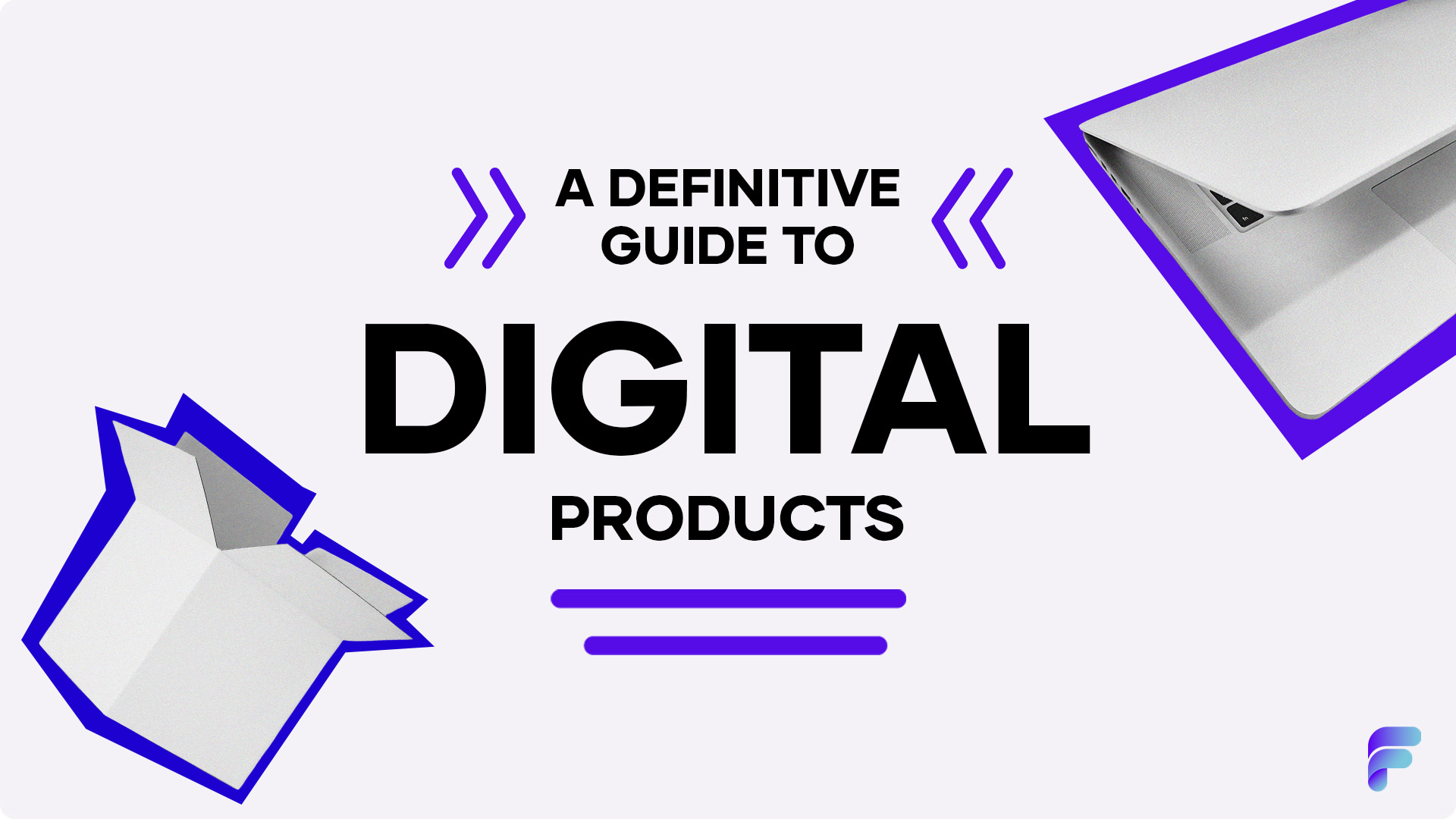
You’re probably here because you’ve seen or heard people talking about digital products like everywhere…
And you if wonder: 👀
- What are those?
- Are people actually making money with them?
- Is it just some fairy dust or is it the real thing?
Your mind probably already kicks in with a lot of self-defense thoughts, like:
all those gurus are probably scammers…
yeah sure, you make $10k in the first 30 days as a total beginner…
or…
yep, another get-rich-quick scheme, I’m out of that.
But those thoughts didn’t stop you and your curiosity and your desire to build your own online business were stronger.
So you start searching more about topic “How to sell digital products?”
Congrats, that’s a huge first step. Most people never even get here!
They get stuck just thinking about that…
If you said yes in your mind to something from above, this article is for you! Whether you’re just starting or already slightly started with digital products but you got lost along the way, that’s ok!
Because there’s a ton of information out there, and everyone says something different. That’s because nobody really knows anything. Everybody’s just trying to shout louder than the next person and stay somehow relevant.
I want to make this article different. It’s based on one simple fact - more than 3,000 creators launched over 5,000 digital products with Flowlance, worth more than $1,000,000 in the last year.
That’s how you sell digital products.
In this article, I’ll uncover the most basic questions that will help you understand the space, see what’s possible, how it all works, and how you can make money ethically with something you’re truly passionate about.
Let’s do this! 🚀
Let’s clear your head and answer most crucial questions that keep people overthinking and stuck.
- What are digital products?
- Is it still a good time to start with digital products?
- How digital products are different from physical ones?
- Why is everybody talking about it?
- How it all works?
- How to create one?
- Easiest way how to start selling digital products?
Q1: What are digital products?
First things first.
What the hell is a digital product everyone keeps talking about?
It’s just a simple online resource you can deliver anytime, to anyone, anywhere.
A digital product is basically well-packed information.
It’s just something that helps someone else get from point A to point B.
Selling information is the most profitable online business model on the planet right now!
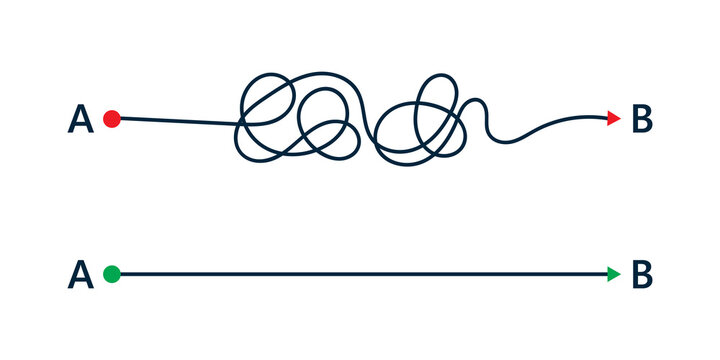
There’s almost no overhead. No shipping. No printing. No inventory. No storage.
You’re selling a digital product you can sell a million times over, without ever touching it again.
Don’t just take my word for it. Here’s a crazy stats: 🤯
The creator economy market is projected to reach $528.39 billion in 2030 from current $191.6 billion (Source: DemandSage).
It’s exploding. That’s why it feels like everyone is talking about it and jumping in.
Remember: Your digital product is the gateway, not the final destination for your customer.
A digital product is meant to give your customer a quick small win. That’s how you build trust really fast.
When you help someone solve a problem they’ve been stuck on, they’ll want to come back for more.
TL;DR: A digital product is a packed information resource that helps someone reach a result in a clear time frame.
Q2: Is it still good time to start with digital products?
I know, now you’re probably wondering…
- But is it still a good time to jump in?
- Isn’t the competition already too high?
- You see those creators with 100k+ followers making millions with digital products.
- Why would anyone buy from you as a beginner instead of them?
- How can you even compete with people who are smarter, more experienced, better at tech… when you feel like you know nothing?
Most people think you need to be an “expert” to make real money online.
But here’s the truth: being an expert nowadays is often a liability.

When I was analyzing people inside my platform Flowlance and looking through over 5 000 products worth over 1,000,000 in sales:
- I saw hundreds of skilled creators with 10+ years of experience struggle to sell even a single product, even though it was pure gold inside.
- Then I saw beginners making $1,000s in just a few days from one simple problem → solution e-book they created overnight and getting top-tier reviews on it.
So how is that even possible?
Because it’s not about expertise anymore.
It’s just about packaging and solving real problems.
Let’s take a few examples:
- Tim Ferriss didn’t become known because he was the best productivity expert. He interviewed world-class performers, tested their methods, and sold the lessons in The 4-Hour Workweek.
- Oprah Winfrey didn’t rise because she was the best at any single craft. She became a bridge, packaging stories and insights from others into a format millions could connect with.
- James Clear didn’t become famous because he was the top scientist in habits. He studied research, simplified it, and sold it as Atomic Habits.
Do you see the pattern?
The winners aren’t experts. They’re curators.
And now with AI, you can do in days what used to take decades.
The old path: spend years becoming an expert → build authority → hope people will notice you and trust you.
The new path: find a problem → package the solution → launch in days → sell and make money.
That’s what digital products unlock for you.
So, is it still a good time to start with digital products?
DEFINITELY YES! IT IS!
In fact, it’s the best time.
Because here’s some good news for you:
1. The world is pretty f*****g big.
Like really big, and there are plenty of people to sell to.
Some eye-opening stats:
- Digital products globally generate over $2.5 trillion per year. That’s about $6.85 billion every single day. If the average price is $50, that’s around 137 million digital products sold per day
- 362,437 people are born every day worldwide = new future customers
- 300,000+ people turn 18 each day globally = new future customers
- 57,500 people lose their job every day in the US (FRED)
- 15,280 people start a business every day in the US (census.gov)
- 7.4 million people are looking for a job every day in the US (BLS)
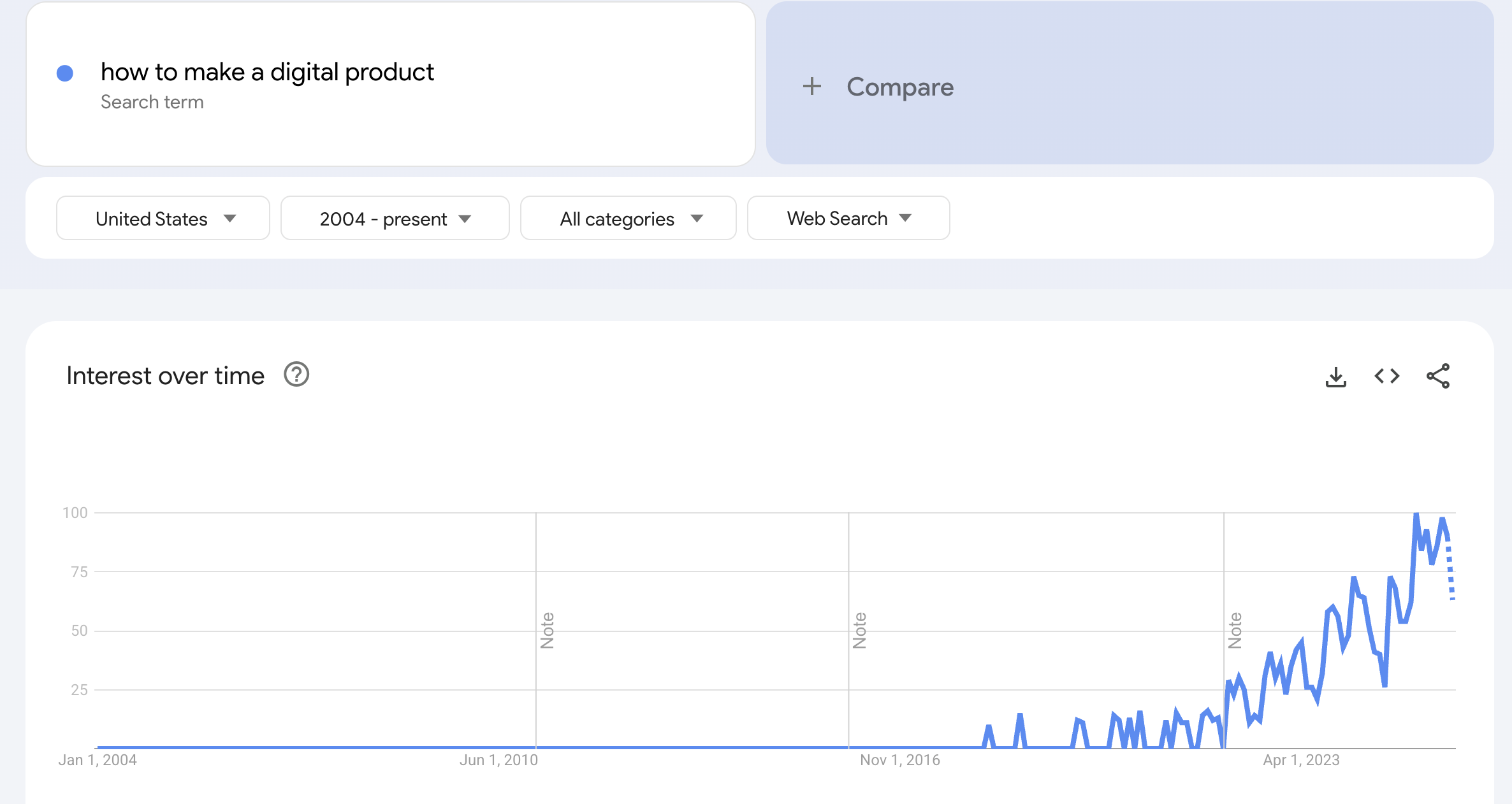
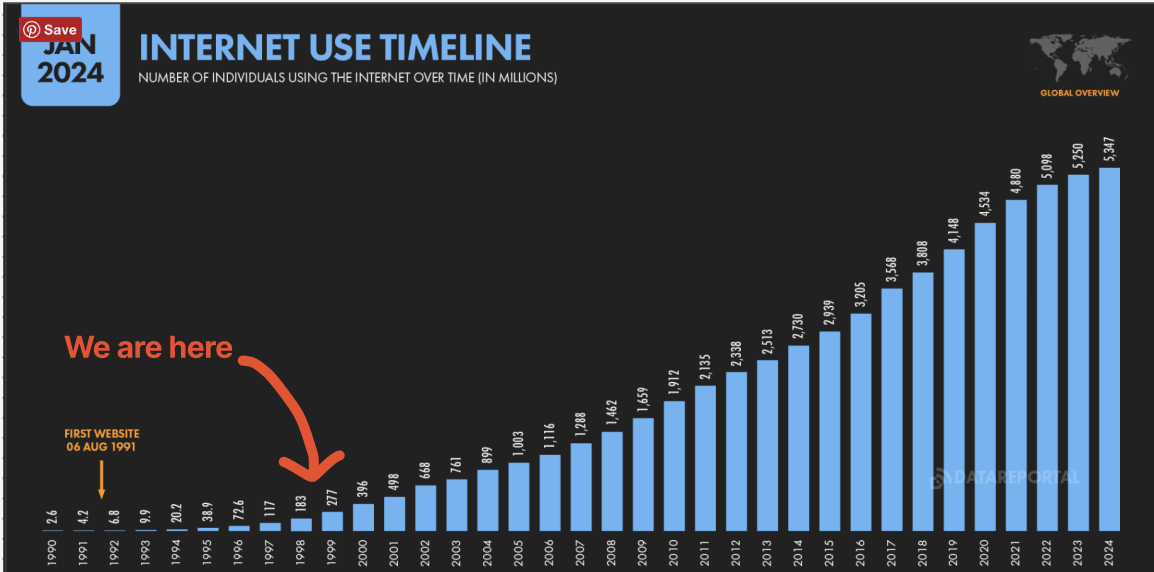
2. Niches… exists
There are millions and millions of different niches.
Every single person on earth is unique. Everyone has a different set of interests, skills, opinions, and their own worldview. Nothing is static. Everything is always evolving. That’s the nature of the universe.
So you can easily create a digital product around your weirdest idea. And I guarantee there are crowds out there who will want it, who will pay for it, and who will be excited about it.
Hell, people are paying for shoes for their dogs. For new Halloween gimmicks every single year. For celebrity-used or even celebrity-touched junk.
So don’t tell yourself “nobody will want my thing.” That’s not reality. That’s just a voice in your head. You can silence it and make your idea real.
PS: What was eye-opening for me was realizing I don’t need figure out some ultra-specific, hyper focus niche I’ve never even heard of. The best niche is you. Just try build your product around your problems, your results, your solutions and your experiences. That’s where the magic is.
3. People buy from people and always will
People are social creatures.
Even with AI booming, people will still always buy from people. AI is just a tool. It can make things insanely fast, with a level of quality we’ve never seen before. But sales? Sales are always based on emotion, story, authenticity, understanding. That’s something only people create with each other.
Quick story: When I was raising money for Flowlance, one of the big investor told me that digital creators would not exist in a few years. That everything would be AI avatars. I felt really bad after this one…
But guess what? He just said that because they invested a 2 years ago millions and millions into a company building those AI avatars. The funny part…? That company burned through all the money without selling a single thing. They failed. They went bankrupt.
Why? Because people buy from people. And always will be. Even if the front-end will be eventually an AI avatar, behind that will be always person injection the stories and beliefs that makes that sales.
Disclaimer: And don’t get me wrong. People buy from people, but that doesn’t mean you necessarily have to show your face if you don’t want to. Sure, it’s better if you do. But what really matters is your unique style, the way you communicate, the way you deliver value, the way you serve. That’s what makes the difference.
4. AI age
With AI, you can create digital products faster than ever before and with higher quality too.
In the past, creating a digital product took FOREVER. Just researching, writing, editing, brainstorming ideas, finding the right angles, choosing the format, and putting it all together could take months.
Now, AI makes digital product creation accessible to everyone. That’s why you see digital products popping up everywhere - thousands of them starting every single day.
But here’s the truth: AI alone will never make a product worth big money. Without your specific knowledge and unique experience, the quality won’t stand out.
The products that actually sell and outperform others will always be based on real expertise and a unique point of view. Think about it… how many digital products have you bought and how many of them truly helped you, huh?
AI should help you cut through the noise, expand your perspective, find new angles, spark fresh ideas, draft faster, and polish your grammar. But it can’t do the hardest part. Just sitting down quietly to figure out how to communicate something in a way that helps someone solve in 5 minutes what they’ve been struggling with for a year.
That’s your job. That’s your unique experience, your story, your point of view. That’s what makes the difference between you and everyone else.
So use AI, but don’t abuse it.
5. Bitcoin example
Let me tell you short personal story that includes my mom.
In 2013 my mom came to me with a newspaper and pointed to a tiny article in the corner. It was about some new virtual currency called Bitcoin. It cost around $13 back then.
I remember that the article said you could even mine it with your computer. She asked me if I wanted to try it. I looked at it, but I wasn’t technical, I was 15 years old and I was too busy playing Counter Strike at the time, so of course I didn’t do it. If I had bought even $100 worth back then, it would be worth $1M today!
You’ve probably heard similar stories dozens of times.
But here’s the funny thing and the reason why I’m telling you this: if I had done it 6 months later, it would “only” be worth $100k. If I had waited 2 years, it would be $250k.
My point here is simple when you see a trend and you feel even a small belief that it could work for you, don’t wait. Execute. Jump on it. It was the same with the start of the internet, with crypto, and now with AI and digital products.
Maybe it won’t turn out exactly how you think. But at least you tried. You won’t just sit there watching another massive opportunity pass by. And the best thing about digital products? You don’t need to throw big money into them like crypto. You can start small. Without any crazy risk.
Digital products, boosted by AI creation, are the biggest wealth transformation of this age.
You want to be part of it NOW because we are now in around 2013 like with Bitcoin!
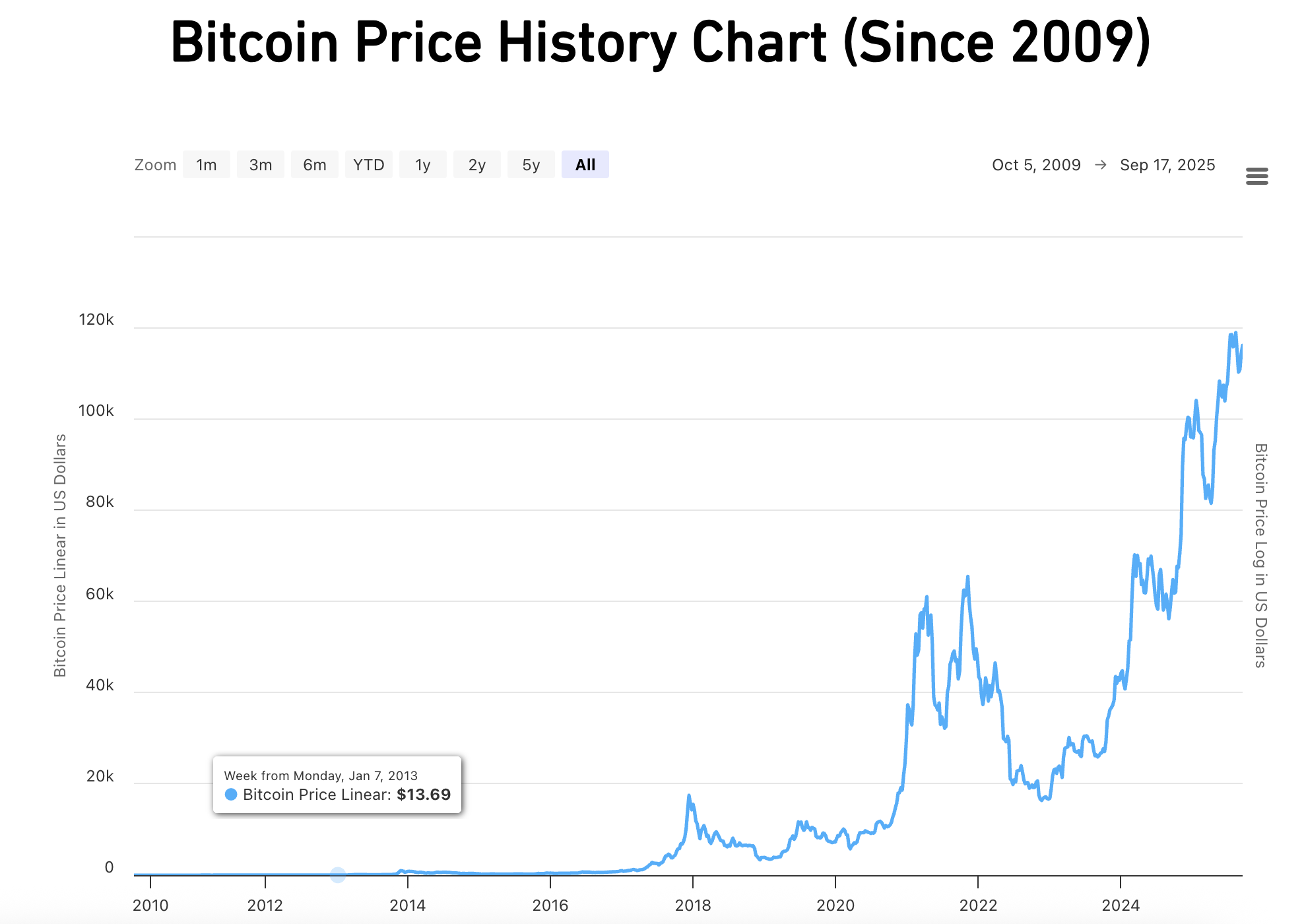
Q3: How digital products are different from physical ones?
This one is big.
Because the second you finally get the difference… it finally clicks.
Physical products are complicated. They need factories, boxes, shipping, warehouses, returns, customs. They can get stuck at the border, lost in transit, damaged in the mail. Every time you sell one, you also spend a lot of money with low margins again and again. It’s a hustle.
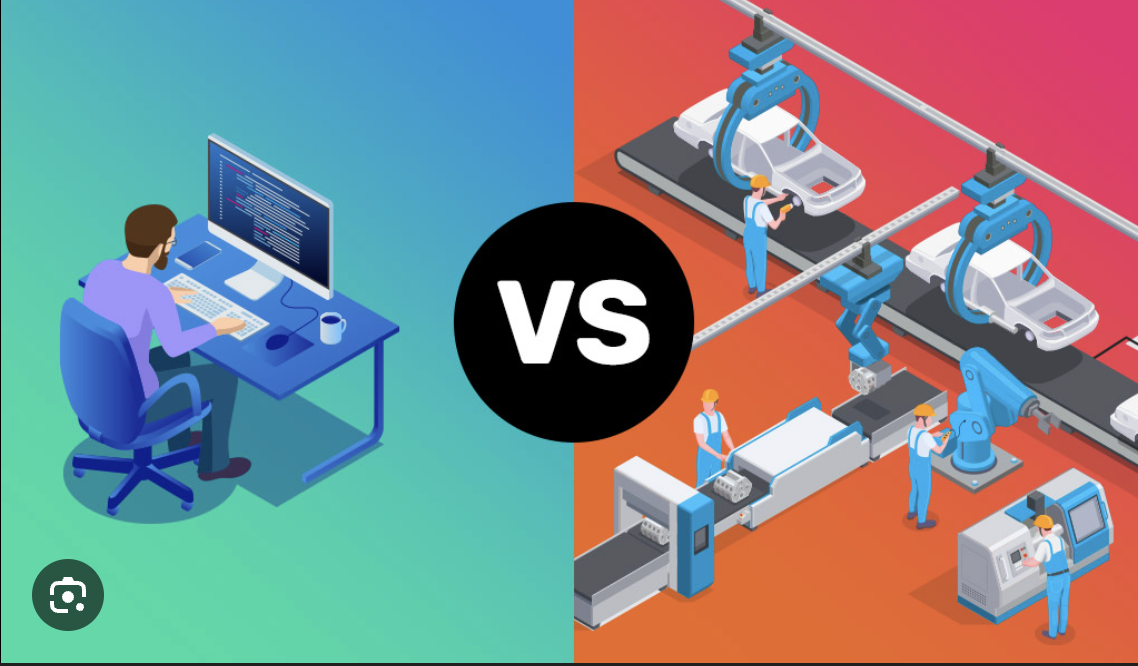
Digital products? They’re totally different game.
- You build once, sell forever. No reordering stock, no running out. Make it once, and you can deliver it 10 or 10,000 times.
- Delivery is instant. Someone buys, boom - they’ve got your products in their hands in seconds. No waiting 7 days for FedEx.
- Costs almost nothing to run. You don’t pay for delivery, packaging or storage. You keep almost 100% margin which is INSANE! Like tell me another business model where you can keep everything you will make?!
- Global from day one. You can sell to someone in Tokyo, New York, or Prague at the same time without thinking about shipping and time zones. Plus you can sell all day long - even when you sleep.
- Update on the fly. Found a mistake? Add a bonus? Push an update instantly. You don’t need to trash a warehouse full of wrong books.
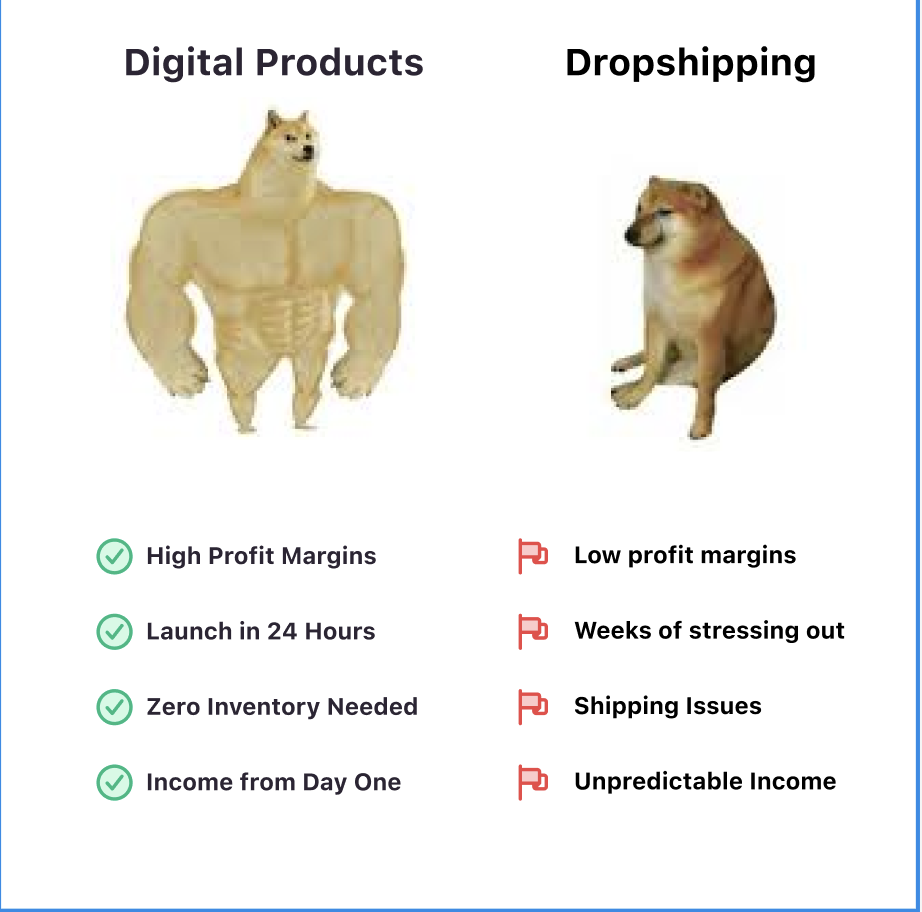
Q4: Why is everybody talking about it?
Because it’s the ultimate freedom.
For decades, if you wanted to do business, you were locked down.
- Locked by your language.
- Locked by your location.
- Locked by borders, shipping, warehouses, rules.
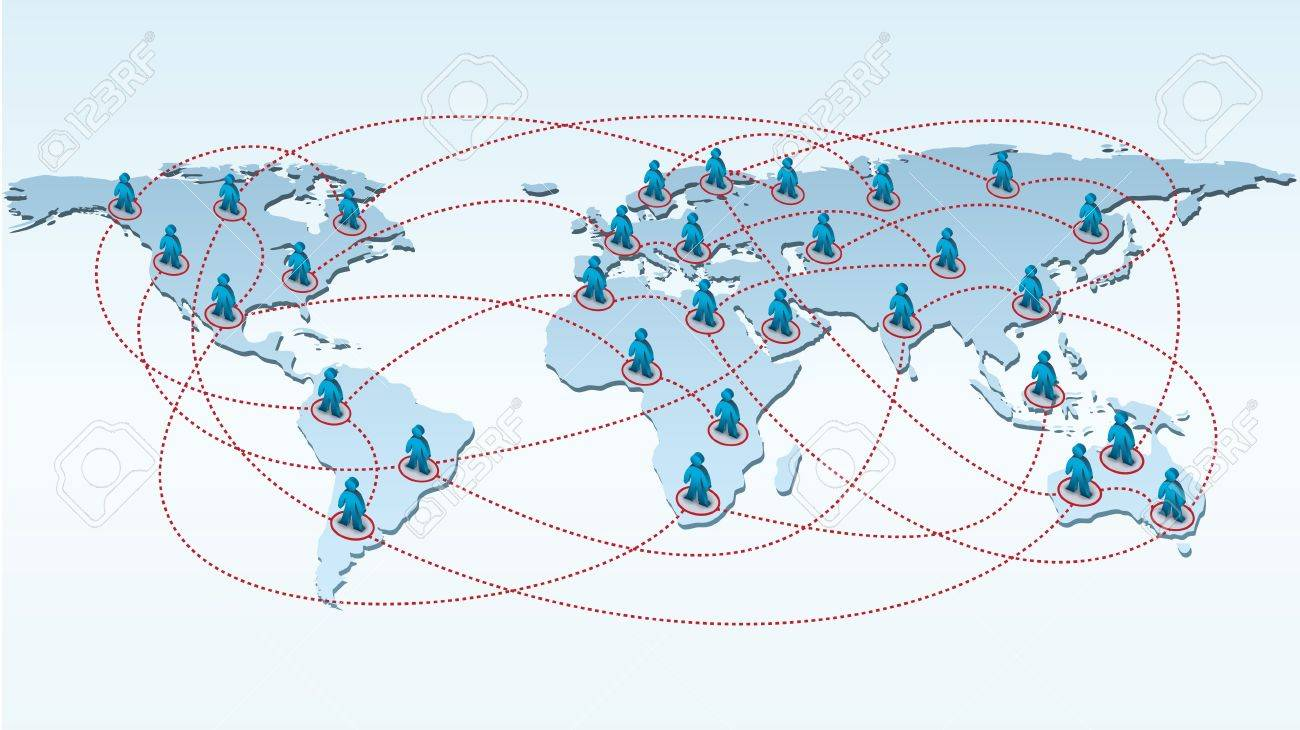
You needed money, connections, investors, developers, big teams, factories.
If you didn’t have those, game over.
But digital products broke all of that.
Now?
Anyone can start. From anywhere. At any time.
- A student in Brazil can sell a Notion template to someone in Canada.
- A yoga teacher in Thailand can sell online private classes to people in New York.
- A mom in Australia can drop a digital meal plan and get buyers in London the same day.
- A freelancer in Prague can package his knowledge and sell to the entire world while sitting in a coffee shop.
This is the democratization of world trade.
Without middlemen and limits.
- 9–5 workers turning their skills into side income
- Side hustlers stacking extra cash after hours
- Moms on maternity leave creating products during nap time
- Digital nomads funding their travel with downloads
- Influencers launching templates, guides, or courses
- Celebrities monetizing fan communities
- Everyday creators selling presets, e-books, or coaching
- Solopreneurs building full-time online businesses
- Students flipping notes or study guides into paid resources
- Retirees sharing a lifetime of expertise in digital form
Because the opportunity is SO BIG it’s almost unimaginable!
With digital products, the whole world is your marketplace.
It’s not reserved for Silicon Valley tech bros, Wall Street guys or billion-dollar companies with unlimited budgets.
It’s open to you.
And that’s why everyone is talking about it.
And why they’ll keep talking about it for a long time.
Q5: How it works?
I call this 3 P’s framework. It’s a system built around:
- Pick – choose a simple product idea that solves one problem.
- Package – turn it into a clear, valuable, easy-to-consume digital product.
- Publish – launch it with your store-front (use Flowlance), set it up for sales and start making money.
That’s the whole game… simple as that.
The beauty of digital products? They don’t take months or years to build. (Well, for some people it does… don’t be that person.) They don’t need teams or warehouses. They’re fast, light and scalable.
- You can create one in 4 hours or less - (more in the next chapter).
- Your customer can consume it in 15–45 minutes.
- It delivers a clear win in one week or less.
- It feels doable, which is what makes people actually buy and finish it and see results.
- It costs less than a pizza, but can pay you for years.
- You can create once → sell forever.
I’ve seen this over and over inside Flowlance.
Skilled experts spend months polishing the “perfect” course… and barely sell anything. Meanwhile, fresh beginners launch a simple e-book or a template overnight solve one problem, give one clear result and boom, thousands of dollars and 5-star reviews.
You just need to solve problems fast.
That’s when digital products work.
Best products are made around YOU! You’re the niche your are looking for! Just try build your product around your own problems, your results, your solutions and your experiences.
Q6: How to create a digital product?
This is really easy one and something you don’t want to overcomplicate.
Like really, just pick one of the tips below and go with it. You can always make it better or change it to someone else later.
But if you are starting you want to be on a market asap, not spend weeks or months tweaking your product in a folder.
The shorter amount of time in which you are able to launch that, the bigger the probability that you will make money with it. Because every day spent at a working desk is a day where your doubts grow and your little voice in your head is winning the game of do it or not.
Pick one. Run with it. Done.
1. Canva
- Use Canva to design something people always want: planners, journals, social media templates, printables.
- Choose a template or start from scratch. Make it look clean, sharp, professional.
- Export as PDF, PNG or JPG (depending on use).
- Mockups = huge. Use Canva or free mockups so people see what they’ll actually get.
- Sell it on your own site on Flowlance.
2. Notion - this guide is made with it
- You can build dashboards, planners, organizers or just text documents like this in Notion. People love how flexible Notion is.
- Make a template: habit tracker, content planner, financial tracker. Structure it so buyer can duplicate and use easily.
- Add instructions / video explaining how to use the product.
- Share through sharing link or use Notion export to PDF.
- Package nicely because good visuals always help.
3. Create a PDF
- Make a PDF guide, checklist, mini course. The content = solving a problem.
- Create 5–10 pages where you describe your own journey from problem to solution.
- Use Canva or Google Docs or Notion to create it.
- Download it as a PDF. Sell via Flowlance on your own site - without commissions or getting it stolen by others on a marketplace like Amazon.
- Drive traffic on your store - post on Threads, make a reel on IG or TikTok, run ads. Just make sure that people will see it!
5. Use platform like Entrepedia for reselling already existing products
Benefits of Reselling:
- Saves you tons of time and everything is already pre-made
- You don’t need deep knowledge and the content and structure are done for you
- Perfect for testing markets or starting really fast with low risk
But here's why I wouldn’t rely on it long term:
- Many PLR products are low quality and you could waste money on trash
- It’s not a great way to build long term brand that people trust
- Trends like “master resell rights” come and go, but your own unique topic? That can last a decade (or more)
But if you want to try this and sell your first product ASAP, go with Entrepedia.
They offer the highest quality PLR products on the market, and I’ve made a deal with them so you can get their entire library at a 20% discount making it the best deal available!
Q7: Easiest way how to start selling digital products?
This is how to get from idea to money in your pocket and why your existing customers will be your secret weapon.
Launch digital products with Flowlance
It’s the best tool on the market. It costs you $19/mo to get started, it doesn’t take any fees, so your earned money is yours, it has everything you need, it is templated for the best conversions possible - creators make over $1,000,000 with it already! You’ll get 7 days for FREE to make your first sale!
So open your account on Flowlance.com and get 7 days for FREE to get started!
1. Pick what to sell
Just start with something small and close to your heart. A template. A short guide. A checklist. Whatever solves a problem someone’s yelling about and you already solved it before, so you know how to do it!
And remember! You don’t have to sell something about digital products and jump on the wave of people who are teaching it. Trust me, you will be far more profitable with something you really enjoy every day and you could do that even for free because that's how much you are passionate about it!
2. Build your product
Use Canva, Notion, PDF exports or buy ready to sell products from Entrepedia. Make it look clean, valuable, and easy to consume!
3. Set it up in Flowlance
Upload your product as a file or as a link. Add a title, thumbnail, and description. Set the price. Done. Find how to do that in 1 minute on Flowlance Help.
4. Make it discoverable
Use your Creator Store / link-in-bio. Show the problem you solve to others. Start making posts on Threads, Instagram or TikTok. Build awareness and collect emails. Don’t forget to collect stories and testimonials from your first customers!
5. Deliver automatically
When someone pays for your product, Flowlance delivers the digital product automatically. You don’t have to email manually and worry about forgetting. You have your handsfree once it’s all set up.
6. Iterate
After launch, collect feedback. Add FAQs, reviews from customers, and level up your copy using their words. Maybe add an order bump or bonuses to boost the value of orders and perceived value of the product.
Why your current customers are EVERYTHING
- It costs 5 times more to acquire a new customer than to keep an existing one
- The probability of selling to an existing customer is 60% to 70%, while the probability of selling to a new prospect is just 5% to 20%.
- Compared to new customers, existing customers are 50% more likely to try new products and 31% more likely to spend more money.
- When they increase customer retention rates by 5%, companies can increase profits by 25% to 95%.
How to use that power with Flowlance
Here’s how to lean into this, in your style:
- When someone buys your first product, send a thank you + suggest another related product (upsell/cross-sell) using the automated email sequences.
- Give them freebies or bonuses. Why? Because bonuses = goodwill = more trust.
- Build simple retention: email those who bought, ask for feedback, share updates, teasers for next product.
- Reward loyalty: special pricing, early access, exclusive offers. Make your existing audience feel they get something others don’t.
TL;DR
Use Flowlance to start asap and avoid overcomplicating things.
Build one product, sell it, level it up based on feedback.
Then don’t neglect your first buyers - they are the quickest path to growth.
If you want speed + profit + momentum, just nurture and repeat.




